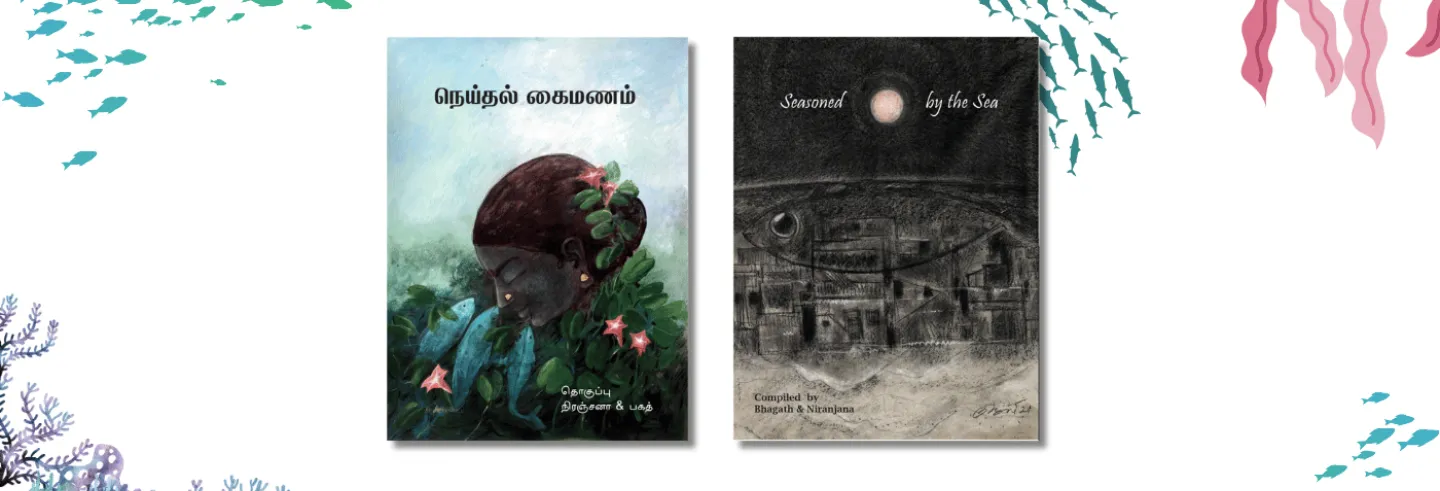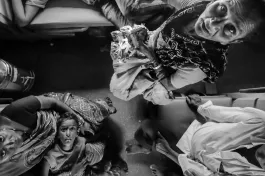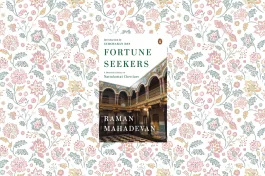Thus sings the Sirupanatruppadai of Pathupaatu in the Sangam anthology, praising the Tamil seashore town of Eyirpattinam and the hospitality of fishermen. Two millennia later, Bhagath Singh A., the co-author of the bilingual cookbook Seasoned by the Sea/ Neidhal Kaimanam, reminisces about the seafood feast his mother offered to every guest at his home in Ennore in north Chennai.
Seasoned by the Sea sails along the Coromandel coast, down from Pazhaverkadu on the Pulicat lake to Puducherry, along the way dropping anchor at Ennore, the harbour of Kasimedu, and fisher homes on the Adyar estuary. At each stop, the reader is offered recipes – some not so familiar even to seafood connoisseurs – and learns about the local fish and the fishing and culinary practices, the everyday life of fishers, and the environmental disasters that await. Where popular literature and cinema have stigmatised the region, its people, and their livelihood, Seasoned by the Sea replaces the stereotypical odour with the savoury aroma of seafood. The Tamil title elegantly combines Neidhal, which refers to the Sangam tinai (poetic mode) 'of the sea coast', and Kaimanam: kai means hand and manam is fragrance - the compound word refers to someone's unique touch that elevates their cooking. Therefore, not only does the food embody the seasoning of the sea, but it also evokes the olfactory essence of the sea itself.
Where popular literature and cinema have stigmatised the region, its people, and their livelihood, Seasoned by the Sea replaces the stereotypical odour with the savoury aroma of seafood.
In Ennore, we feast with the river-fishing community of Kattukuppam and the sea-fishing community of Thazhankuppam, who make crab fries with pepper and vegetables like brinjal. (A note to buy and cut crabs in our kitchens provides additional assistance to reader-cooks.) While madavai, the mullet, is globally available, Desingu’s description of the nets they use and the process of catching madavai adds flavour to the reading. Mekala teaches us how to make a kulambu and a sunda vechathu from the catch. Tamil readers will know the latter as a cooking technique of reducing the broth to a viscous consistency, often used to preserve leftovers. In Ennore, it is a separate dish in itself, used to “thoroughly encase the fish in coconut, chilli and other flavours.” We could also nibble on crunchy, almost-caramelised prawn suttadhu that fishers make whilst fishing: “prawns are cooked in a pan with seawater so they are salted until all the water evaporates and the hot pan dry roasts the fish lightly.” Or sample kalavan kulambu, kilichai sunda vechathu and mulima fry, all unique to Chennai. If the steps to make a parai kudal kulambu are too daunting and best left to an expert cook, even a novice could try making a dried king fish sambal.
The food dished up reflects how Pazhaverkadu “is a socially cosmopolitan space […with…] long standing trade links with the eastern and western Indian Ocean, and was most recently a key port for the Dutch and Portuguese Colonial enterprise.” As we feast on the prawn urandai kulambu in Thoniravu, we could reflect on the connections implied by the town’s lilting name, deriving probably from the Arabic sailors resting their boats (thoni) in the night (iravu) here). The maritime links are reiterated when Burmese athos and prawn biriyani are served up. “People think that coastal Muslim cuisine is only biriyani and vaada,” argues Jamila, who shares her recipe for prawn chotta, a deep-fried snack. Naseera's prawn vaada adds variety to popular snacks like bajjis and bondas. And Rajkamal M. gives his bittersweet recipe of prawns, but not before a poignant account of childhood in Pazhaverkadu and what awaits its residents. The son of a prawn fisher, Rajkamal recalls how his father “never really taught me all the skills, and tricks of his trade. I knew what he was thinking: that if I learned to fish for prawns, then I may stop going to school.”
While fishing in the sea is primarily done by men, fish markets would not function if not for women's labour.
Rajkamal’s father might have had prescience. ‘Development projects’ such as the expansion of the Kattupalli port by Adani Ports threaten life and livelihood in Pazhaverkadu, and we do not know whether the town will exist as we know it now. Its residents make a stand: “they have dipped into the novel armoury of their culinary expertise. They’ve organised ‘seafood festivals,’ which showcase the biodiversity and cultural wealth of Pazhaverkadu besides asserting fishers’ unique claim to the waters here,” Bhagath Singh and Niranjana note.
While fishing in the sea is primarily done by men, fish markets would not function if not for women's labour. Fisherwomen's day begins as early as 1 am past midnight, as they go to harbours and markets to auction the catch, bid for the fish, distribute, and sell. We meet several women skilled in auctioneering, cleaning, cutting, and selling fish, in addition to preparing delicious seafood dishes. They have experimented with lesser-known fish varieties, creating unique recipes such as sunda vecha sole or naayaral naaku, thumbili fry, soorai (tuna) puttu, and pan-fried tuna in Kaasimedu. Akka kadais (‘elder sister’s food stall’) run by fisherwomen dot the seashore and attract not only a working-class clientele but also food vloggers and enthusiastic ‘foodies’. They may not be consciously feminist – like the protagonists described in Alex D. Ketchum’s Ingredients for Revolution: A History of American Feminist Restaurants, Cafes and Coffeehouses – but they are nothing short in spirit. Uma’s stall in Chennai’s posh Besant Nagar is emblematic of such an enterprise – she is the primary earner for her family and employs her husband and son in her stall. (Her magical spice mix recipe features in book.)
Seasoned by the Sea/Neidhal Kaimanam offers the ingredients, recipes, and seafood as deeply intertwined with its people and environs.
Seasoned by the Sea invites a wider audience to engage with life associated with the sea. The compilers are academics who work on the region and bring their expertise into the text (Bhagath Singh is a postdoctoral researcher at the French Institute of Pondicherry and Niranjana is a human geographer at Queen Mary University of London). Essays like Santhakumari Thamizharasan’s ‘When fish fly and fisher feast,’ document the ritualistic aspects of fishing communities, like the amba songs they sing on the waters. Palani Kumar’s photographs and the illustrations and design of Anthoni Guruz showcase the power of visual imagery, making the book an exceptional production.
The text marks a break from humdrum conversations about food in the Tamil/Indian sphere, which primarily focused on history, religion, and ritual, or the popular magazines and television shows (and increasingly, YouTube videos and Instagram reels) that reduce food to recipes and ingredients and strip away the broader context. Seasoned by the Sea/Neidhal Kaimanam offers the ingredients, recipes, and seafood as deeply intertwined with its people and environs. We are reminded of Bakthavachala Barathy’s introduction to Tamizhar Unavu (‘The Food of Tamils,' in Essays on the Culinary Culture of Tamils, 2011): “Food is not only related to the [individual's] body but the whole society […] Eating is a social act.” Food and culinary practices in India– defined by religion, region, caste, and class– evoke distinctive emotions. This cookbook – filled with the smell of the sea, the effort of labour, and the warmth of love – spreads its kaimanam.
Aadhavan Pazhani is an AHRC CHASE doctoral candidate at Goldsmiths, University of London. He is the co-translator of Buddhism and Tamil (1940) by Mayilai Venkatasamy (Routledge, 2025).









